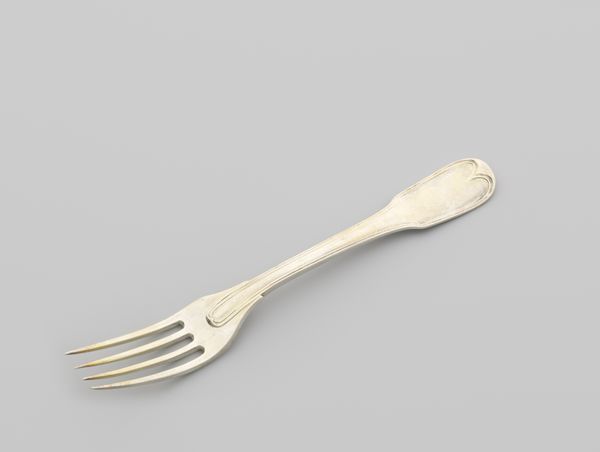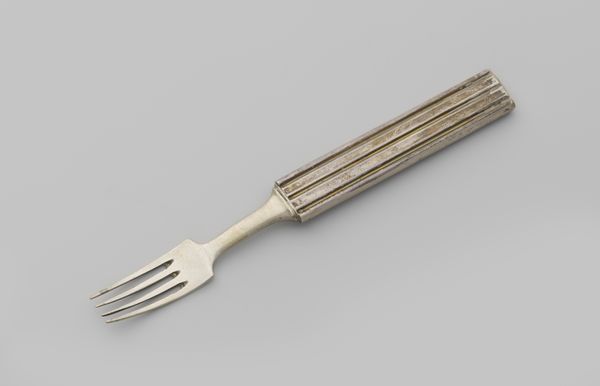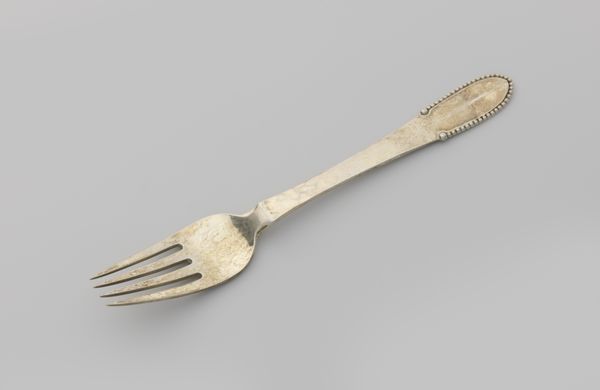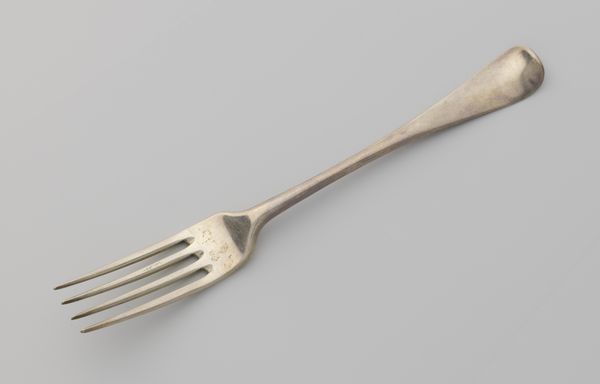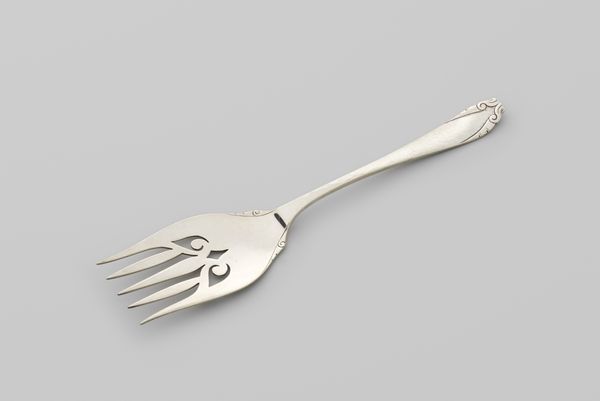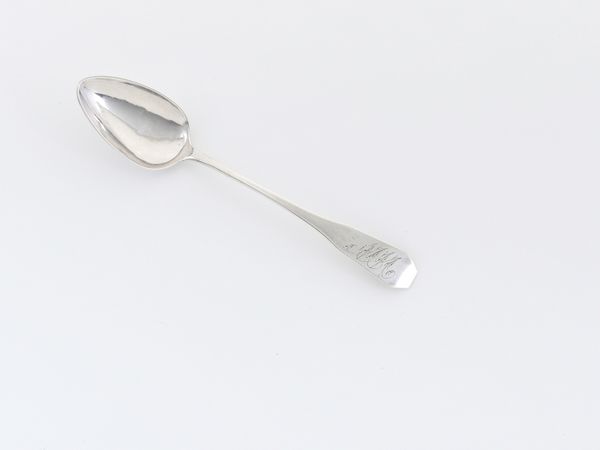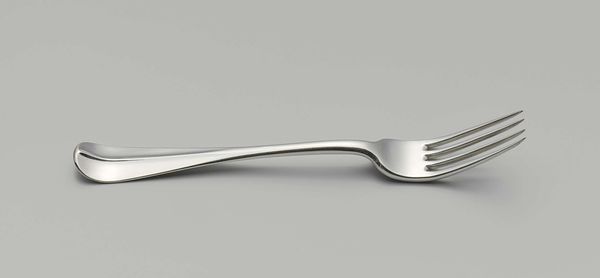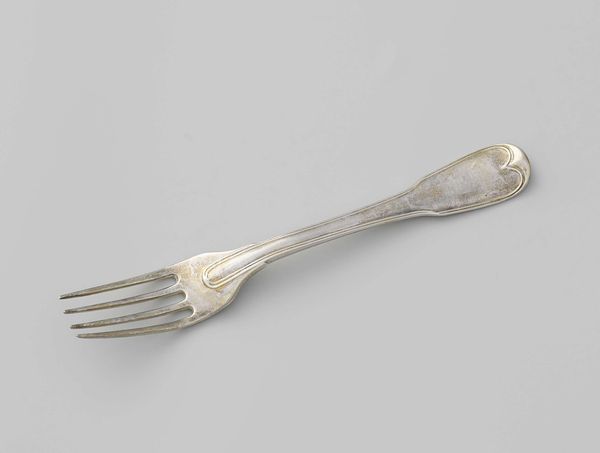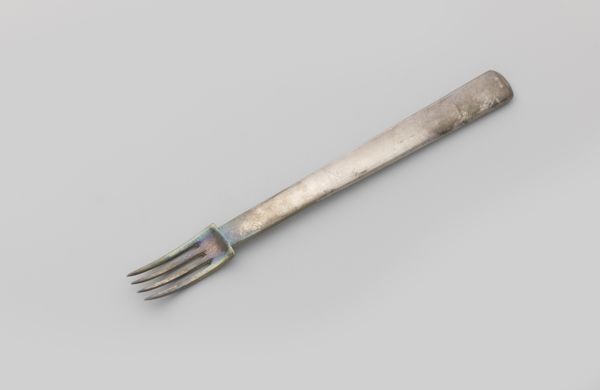
silver, sculpture
#
silver
#
sculpture
#
decorative-art
Dimensions: Overall: 1/8 in., 0.16kg, 11 in. (0.3 cm, 27.9 cm)
Copyright: Public Domain
Editor: We're looking at a silver serving fork, crafted around 1775-1776 by Melchior Latil. It resides at the Metropolitan Museum of Art. What strikes me most is its elegant simplicity. How might we analyze the form of such an everyday object? Curator: Observe the curvature, how the tines flow into the slender neck, expanding into a generous handle, terminated by that delicate shell motif. It's a study in controlled line and volume. The reflective surface plays with light, animating its otherwise static form. Editor: It's certainly well-balanced, almost perfectly symmetrical. Is the shell more than just ornamentation? Curator: Undoubtedly. The shell provides not merely visual interest but introduces a crucial textural counterpoint to the polished smoothness elsewhere. This interruption underscores the artifact’s materiality while referencing natural forms – an interplay of the artificial and the organic. Editor: So, the success lies in this formal dialogue between texture and form. What do you make of the negative space created by the tines? Curator: Precisely! Note how that negative space actively participates in the overall design, drawing the eye and giving lightness to what could be a heavy, monolithic form. It serves a purpose both aesthetically and functionally, defining the utility of the implement within a formal construct. Editor: I hadn't thought of it that way. Focusing on those visual relationships really unlocks so much. Thanks! Curator: My pleasure. Deconstructing form often illuminates unseen significance, revealing both intent and inherent beauty.
Comments
No comments
Be the first to comment and join the conversation on the ultimate creative platform.
